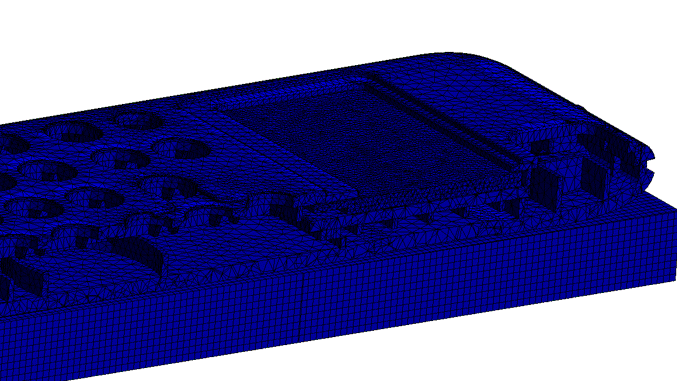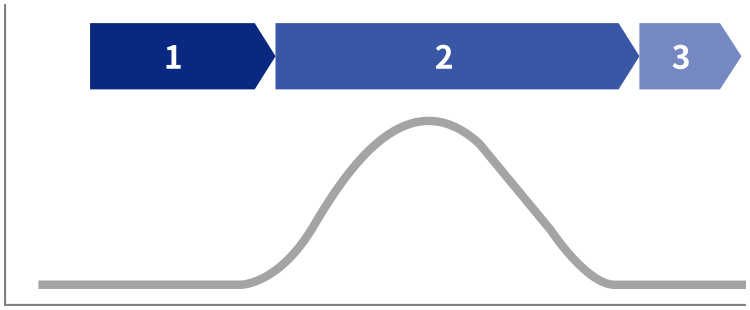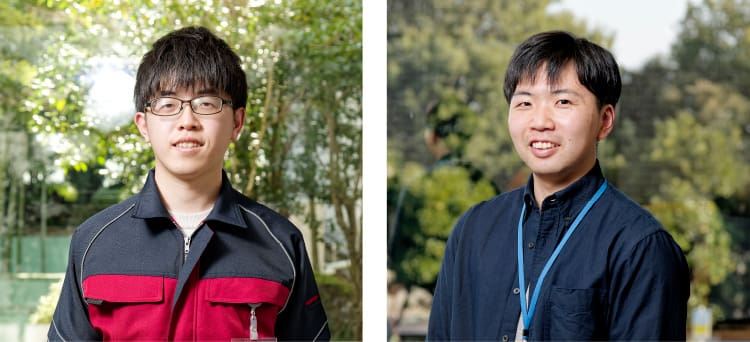
Ensuring safe and stress-free usage.
Casio’s scientific calculators are developed with a particular focus on quality.
Casio calculators are used in places of learning all over the world. We perform a wide variety of tests to ensure that our calculators provide a safe and stress-free usage experience. Only those products that have cleared our exacting internal standards are delivered to customers.
Quality focus 1
Quality testing that considers stressors that calculators might experience in various usage scenarios
Quality focus 2
New initiatives to realize higher quality
Electrostatic test


Everyday static electricity poses a significant risk to precision devices. An electrical discharge gun is used to apply static electricity to various parts of the calculator, including the keys and the display, in order to test the calculator’s resistance. This is an important test, as many countries have established their own official standards with respect to electrostatics.
Engineer comments
Static electricity isn’t something that we can usually see with our eyes, and a lot of people don’t give it much thought. Even so, static electricity is a major threat to precision devices.
We check durability carefully to ensure that nothing obstructs the operation of the calculator when it’s required to perform accurate calculations, avoiding situations like the display going off or calculations being reset.

CASIO COMPUTER CO., LTD.
Hardware Quality Assurance Department
Yuma Matsumura
Twisting strength test


This test assumes stressors on the calculator that might be experienced when carrying it in a bag or pocket. The calculator is placed on a rotational device and twisted left and right. The test applies a strong force in particular directions, and the calculator is checked for the presence of any cracks or breaks and whether any problems occur with operation.
Engineer comments
These scientific calculators are thin and light. It’s very convenient to just put one into your pocket, like when you’re carrying it to your next class. But sometimes our pockets can subject the calculators to forces we aren’t expecting. We use this kind of test to verify the rigidity of the calculator as part of our efforts to ensure that its construction is strong.
Full-product pressure test


This test considers the kinds of stressors that might be placed on scientific calculators when they are pressed on by study materials or other external pressures, such as when the calculator is carried inside a bag on the way to school.
In this test, both ends of the calculator are secured, and pressure is applied to the central portion of the device to test its durability.
Engineer comments
We need a lot of different things as we go about our day or for our daily studies. These include anything from textbooks, notebooks, and smartphones to pens, keys, and more. Our bags create an environment where all of these things are pushing against each other. Sometimes, something might press against our belongings from outside the bag. We use this test to check the durability of the calculator when it is subjected to these stressors, and we use the results to inform our designs.
Button durability test


In this test, a machine is used to press the keys repeatedly to check the durability of the keys during repetitive operations.
Engineer comments
When you use your calculator for a long time, it experiences a great number of key entry operations. We perform a test to verify repetitive key operations to ensure that our calculators can be used with peace of mind.
Scratch resistance test


This test considers the wear that a calculator experiences from repeated use. A number of keys are examined, such as the number keys, the AC key, and function keys. The calculators are checked for wear by repeatedly moving them side to side while rubbing them through the use of an abrasive agent defined under Casio’s internal standards.
Note: Repeated rubbing against the abrasive agent on multiple keys set on the device results in shaving on the abrasive agent.
Engineer comments
The keys are the parts of a scientific calculator that see the greatest amount of use. We use this test to verify how much wear the keys experience and their durability, in an aim to have our products provide a stress-free user experience.
Free fall impact test


This test considers the forces that a calculator might be subjected to when it is accidentally dropped, such as off of a desk while the calculator is being used. The calculator is held on both sides by an arm, and is then released at a certain height. The calculator is checked by having it fall onto a block that is intended to simulate a hard floor.
Engineer comments
When people are concentrating hard on their studies, there will come a moment where they drop their scientific calculators off of their desk. This is not an uncommon situation. We also consider various other scenarios, and we test the calculator’s durability when dropped from different heights.
Hard cover attachment durability test


In this test, a protective hard cover is attached to the calculator, which is then secured to a specialized testing apparatus. A robot is used to repeatedly detach and reattach the hard cover. The calculator and cover are then examined for the presence of any breaks or cracks at the places where they are secured.
Note: This test is performed depending on the type of cover.
Engineer comments
Hard covers are very useful, because of the protection they can provide to the back of the calculator when they are removed for use, and to the front of the calculator during storage, such as the display and keys. In this test, we assume that such cases will be attached and detached repeatedly throughout daily use. We pay special attention to the details of our designs by ensuring through this test that the parts where the case is secured do not become loose, leading to the case falling off.
New initiatives to realize higher quality:
CAE analysis
From 2010, Casio has introduced computer-aided engineering (CAE) analysis. This technique involves computer simulations during the initial stages of product development, and can lead to the early discovery of design problems. The technique has been successfully used to improve design quality.
What is CAE?
Computer-aided engineering (CAE) is a technique whereby computers are used to simulate physical phenomena. By entering the structural data of our calculators into the system, we are able to check the strength of the calculators with respect to falling, pressure, and other stressors. This enables us to perform testing during the pre-prototyping stages, so that we are able to efficiently create high-quality products.
Main CAE analyses performed for the ClassWiz Series

Free fall impact
This test re-creates conditions where the calculator falls from a certain height, such as off of a desk. An acceleration is applied to the calculator depending on the height from which it falls.

Full-product pressure
This test is for checking whether any cracks appear in the case when force is applied to the central portion of the calculator. The same force as that used in the quality testing performed with actual calculators is applied, in the same location.

Localized pressure
This test is for checking whether any problems arise when force is applied to certain parts of the calculator. The focus of these checks is on the display and certain parts that are weaker against external forces.

Hard cover attachment
This test analyzes the required force when attaching and detaching the hard cover against the parts that secure it. The test is used to verify the durability of the cover through a check of the tension when the cover is deformed.
Note: This test is performed depending on the type of cover.
By discovering issues at an early stage,
the number of issues that occur is greatly reduced.
Timing at which issues occur
Before introduction
Issues were found for the first time when tests were performed with actual devices at the prototyping stage.
Distribution of design problems

1: Design 2: Prototyping 3: Mass production
After introduction
Issues can be found at an earlier stage of the design.
Distribution of design problems

1: Design 2: Prototyping 3: Mass production
Number of issues that occurred throughout development overall
By resolving issues and problems during the design stage, the number of issues that occurred during development overall, including the prototyping stage, decreased by 63%.
Graph showing the difference in percentages before and after introduction

63% reduction
Engineer comments
When we introduced CAE analysis, we became able to evaluate the strength and durability of our calculators in advance, which made it possible for us to offer products of even higher quality. In addition, by reducing our physical prototypes, we have been able to reduce our usage of the materials used to create them. This is linked to a reduced impact on the environment.

CASIO COMPUTER CO., LTD.
Mechanism Technology Department
Naoki Sekiya
Through the pursuit of high quality, we support education and learning environments globally.
We put great effort into manufacturing goods of high quality so that our products can be used with peace of mind in many different learning situations, including in classrooms and research. We consider the various actual environments in which customers will use our products, thinking about the required level of quality as we perform various evaluations from the prototyping stage. It would bring us great joy to have you try out one of our calculators and experience their level of quality.


Beware of counterfeit products!
Counterfeit products that imitate Casio’s scientific calculators are becoming more widespread in many countries. Even though they look similar on the outside, these products are made from inferior materials and are manufactured to a lower quality standard. This can result in certain risks, including breakdowns and incorrect calculations during exams. Always purchase genuine products from Casio’s online store or from officially licensed distributors.
